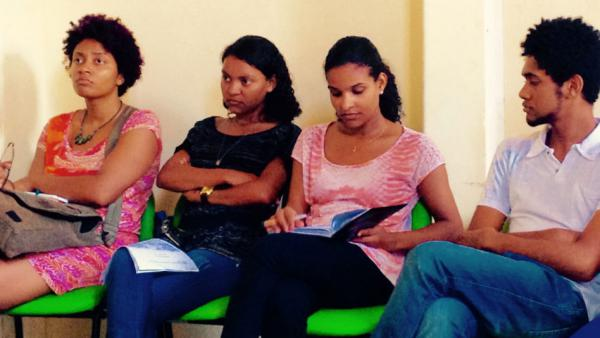Jamila Abbas, a member of the Black Feminisms Forum working group shares her vision on why we need feminism in schools.
As a Black girl, now entering grade 10, the experiences I have had in school make me glad to be an African feminist.
I have lived in different cities in Africa and gone to school in the French academic system in those places. My schools have been relatively privileged, well equipped and getting high pass rates in international exams, preparing students in Africa for higher education largely outside of the continent. But there is little explanation of why, only an implicit understanding from the largely white administration and teaching body, that ‘outside’ is better. There is no mention of how African universities once thrived and how African governments have been forced to de-fund public institutions, including universities, in order to get loans for development.
My mother likes to recount, I don’t remember it so well, that when I was in grade 5, our classroom had a ‘history of the world’ chart that started in prehistoric times and had the image of a dark skinned man, somewhat hunched over, with a spear in hand, to the middle ages where a dark haired white man stood in front of medieval castles, to ‘modern times’ where a blonde man sat at a computer. Imagine a class of twenty children, about three quarters of whom are not white, and half of them are girls, seeing this as world history every day. The message is that the world is only European and male and the more modern ‘the world’ gets, the lighter skinned and haired the men get. These are small details but they highlight the deep-seated racism and sexism of the curriculum.
A detail that few pay attention to is school dress codes.
Every school that I have been to has a dress code that is largely targeted at the girl student body and insinuates, if not states, that girl children need to cover themselves so as not to distract the boys and in order to create a ‘proper’ learning environment. The suggestion that our bodies are a distraction that need to be policed by our parents and then by the school is in the rulebook. Boys on the other hand are never told that their shirts are too revealing, their shorts are too tight nor too short.
The implementation of the rules is selective though.
I noticed in my school in grades 8 and 9 when the girls’ bodies were beginning to be curvier, that it was primarily the Black girls and not the white girls who were policed. I am not sure if this was because our curves tended to be more accentuated or because generally Black women are sexualized (and therefore policed) more than white girls, at least by white adults. I was once stopped and written up by a school administrator for wearing high waisted white jeans and a crop top that reached the top of my jeans. I looked around to the white girls in booty shorts and wondered how my outfit out did theirs in these white administrators minds. My mother called the school to complain about their imposing their body shaming rules on me.

They told her that they understood the rules were subjective but that they were using them to keep me safe, to which my mother responded that if there is a problem of safety in the school related to the boys and men’s behavior, it is the boys and men that needed to be punished and not the girls. They were perpetuating a rape culture where the onus is on the girls to keep themselves safe… and if they don’t manage, it is something to do with what they are wearing. The same principle was confirmed in a sex education class we had in grade 8. While the conversation was well handled, open and honest about lots of different sexual activities and sexual health issues, the teacher leading the conversation did say it was ‘up to the girls to keep their honor because the boys can’t help themselves’. In one sentence, she gave a group of 12 year old boys a license for life to act in predatory ways.
The dress code incident happened to me at the same time as I read a girl in France being kicked out of class for wearing a skirt that was too long because it was a ‘display of religion’!
The state legislating how women dress, and schools policing the bodies of young women appears to me to be along the same continuum. In grade 9, I had a woman history teacher who took pleasure in humiliating her students – as do too many teachers. It was clear to me that her humiliation was punctuated by her racism and sexism also. She once said that I would become a prostitute because I was wearing tight clothing and chewing gum. Again my mother reacted and eventually pulled me out of the school. But this is just an extreme example of a more fundamental problem of misogyny and racism that exists in all of society. Feminism prepares me and equips me to deal with that and to understand that all these issues are connected. I am lucky that I go to school, so many girls my age in Africa don’t have that luxury, and that I go to some of the schools that will give me access to a world of choices. But we also need to think of how our schools mirror our societies and make them better learning institutions for Black girls.
It starts with the small things…
This article is brought to you courtesy of the Black Feminisms Forum Working Group of which Jamila Abbas is a member. The Black Feminisms Forum will be held on the 2nd & 3rd of May, 2016 in Costa do Sauípe, Bahia, ahead of the 2016 AWID Forum.
